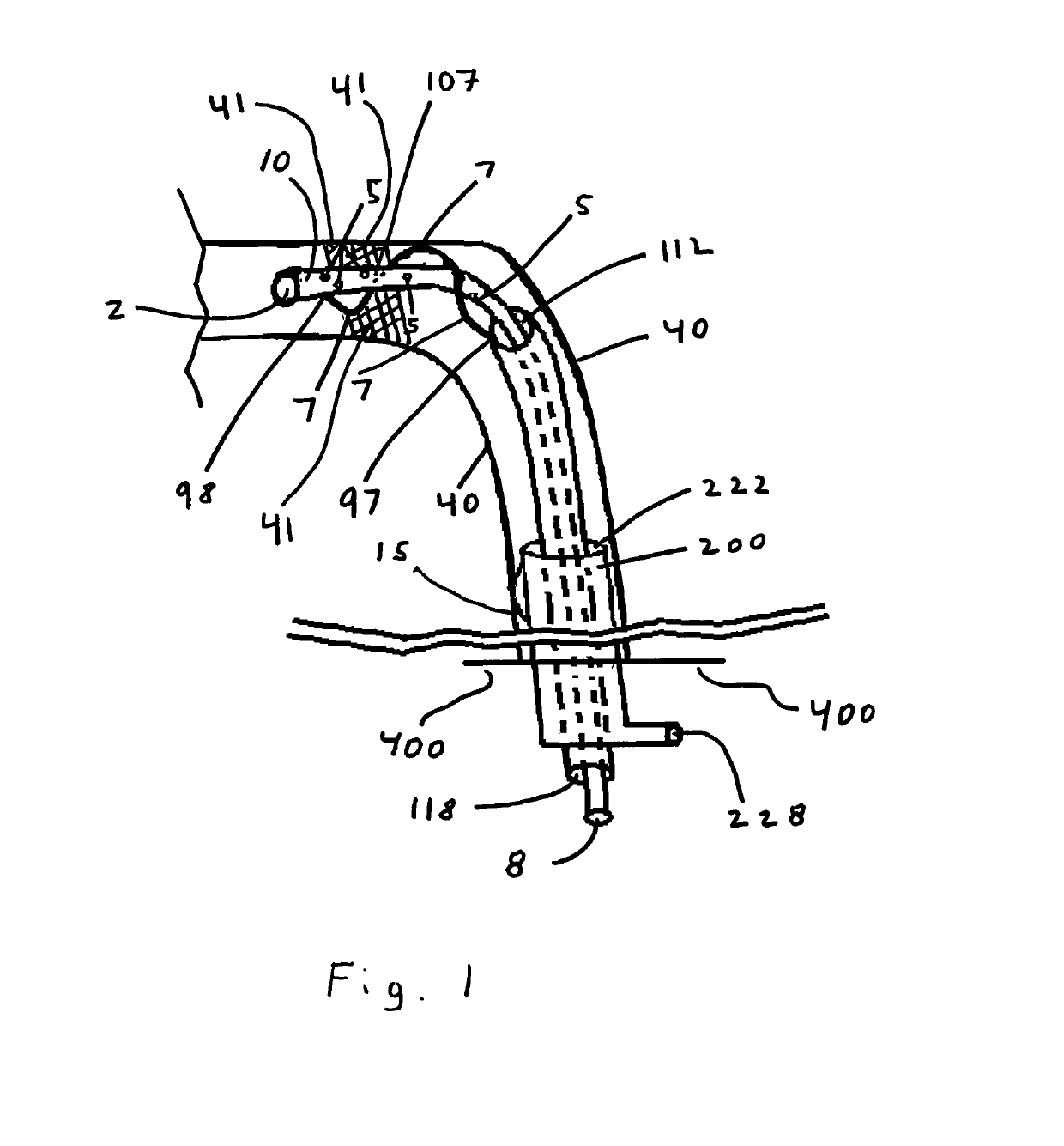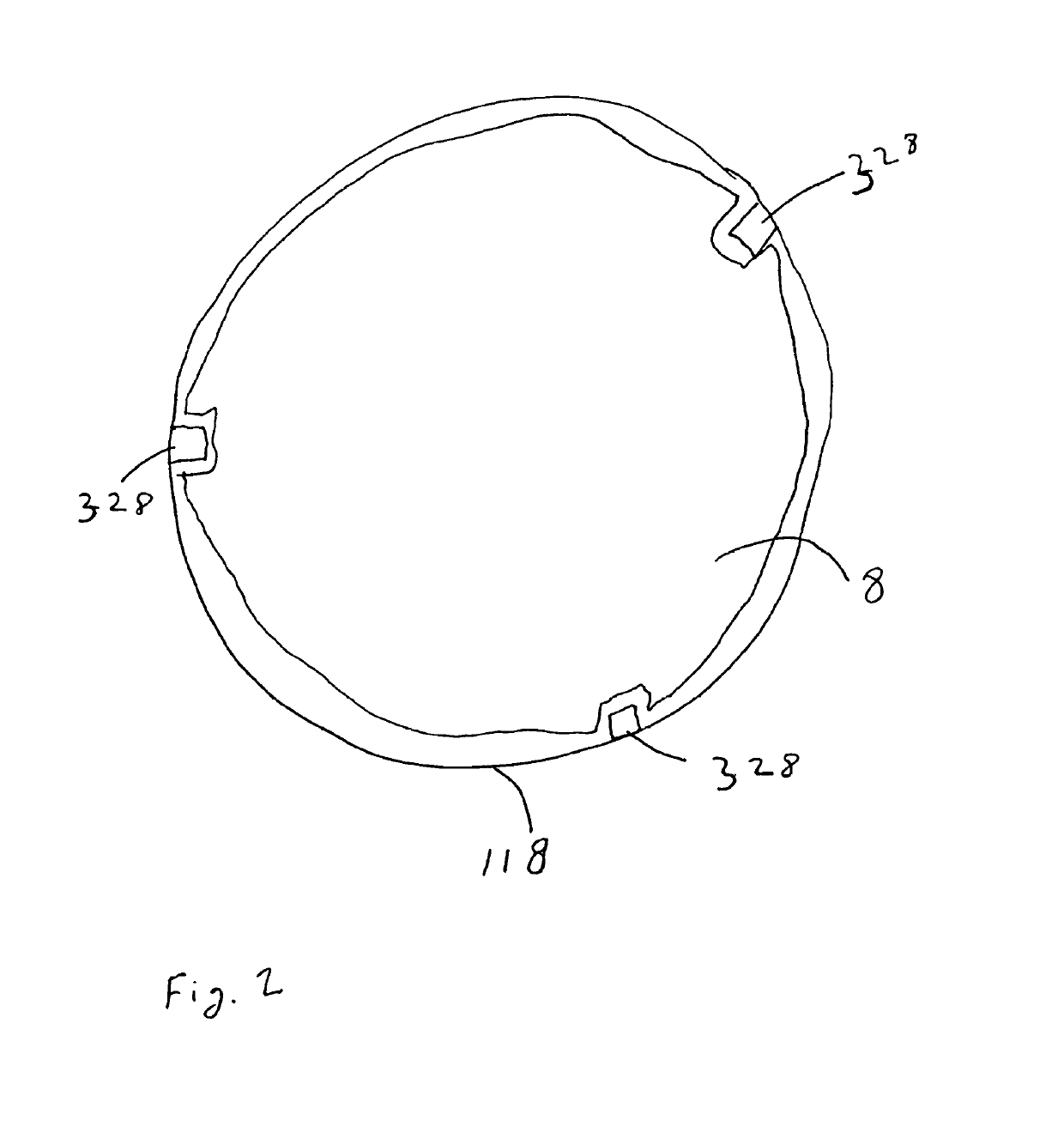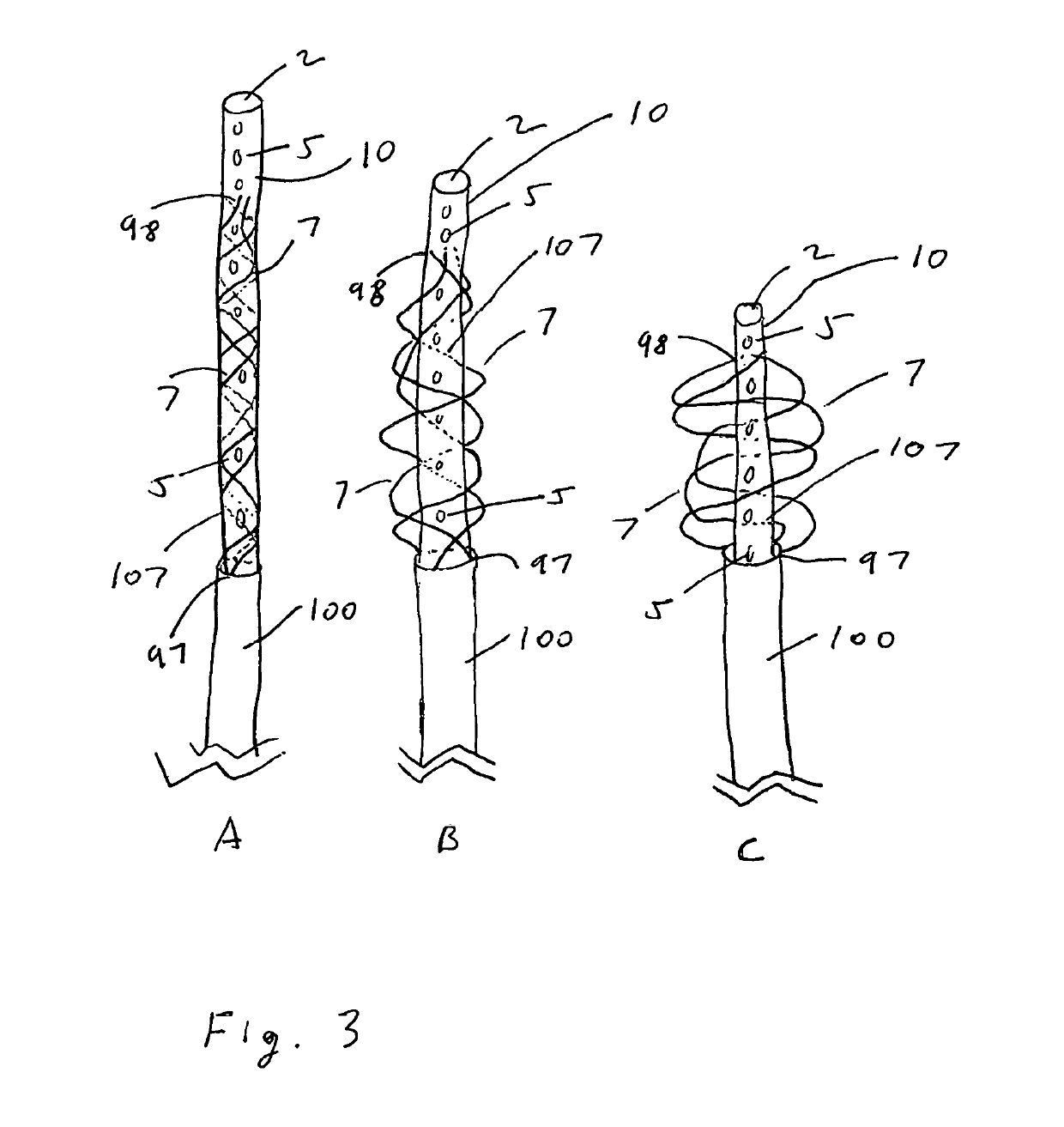System and method for clot amelioration
a clot and system technology, applied in the field of medical devices and methods, can solve the problems of presenting a significant risk of injury to the blood vessel wall, failure to achieve sufficient thrombosis removal, and general ineffective emergency treatment, and achieve the effect of minimizing the risk of injury
- Summary
- Abstract
- Description
- Claims
- Application Information
AI Technical Summary
Benefits of technology
Problems solved by technology
Method used
Image
Examples
Embodiment Construction
[0021]Referring now to FIG. 1, the present invention is disposed within vessel walls (40) and has impaled obstruction (41), typically a clot. The current invention is composed of three concentric sheaths, namely inner sheath (10), intermediate sheath (100), and outer sheath (200).
[0022]The first, innermost sheath is a hypotube (10) having a distal tip (2), a proximal tip (8), at least one perforation (5), and macerating elements (7). Proximal tip (8) communicates with an irrigation control system (not shown) to deliver irrigating fluid therethrough to perforations (5). Macerating elements (7) may be at least one wire or at least one stent attached to inner hypotube (10) at connection points (98). Macerating wire loops (7) are depicted in the embodiment illustrated. Obscured wires or loops (107) are depicted passing behind inner hypotube (10) as dotted lines to shown rotation. In some embodiments inner hypotube (10) may have an attached wire (not shown) extending from its distal end ...
PUM
| Property | Measurement | Unit |
|---|---|---|
| area | aaaaa | aaaaa |
| blood pressure | aaaaa | aaaaa |
| time | aaaaa | aaaaa |
Abstract
Description
Claims
Application Information
 Login to View More
Login to View More - R&D
- Intellectual Property
- Life Sciences
- Materials
- Tech Scout
- Unparalleled Data Quality
- Higher Quality Content
- 60% Fewer Hallucinations
Browse by: Latest US Patents, China's latest patents, Technical Efficacy Thesaurus, Application Domain, Technology Topic, Popular Technical Reports.
© 2025 PatSnap. All rights reserved.Legal|Privacy policy|Modern Slavery Act Transparency Statement|Sitemap|About US| Contact US: help@patsnap.com



